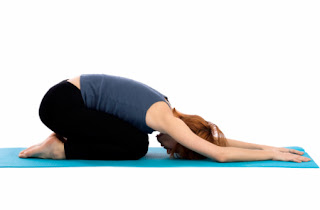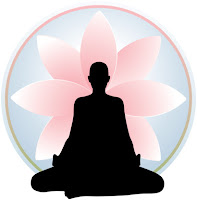By Faye Martins
Everyone has a bad night’s sleep
once in a while but many people suffer from chronic insomnia. Often times the
culprit is stress. The thoughts are consumed by what is needed to be done in
the future or what should have been done in the past. Chronic insomnia
sufferers typically experience fatigue, poor concentration, decreased alertness
and performance, and muscle aches. These symptoms occur because during sleep,
the body is producing hormones that allow for recovery and healing of muscles
and tissues and the brain is also restructuring neural networks and helping to
solve complex problems. Many chronic insomnia sufferers have successfully
eliminated or reduced their stress and anxiety symptoms by incorporating yoga
into their life.
The yogic path includes the positions practiced, controlled breathing exercises, and meditation employed in practice, which help the body eliminate anxiety and stress. To correctly achieve a pose and hold that pose, the individual must focus their attention in the moment. Thinking and worrying about outside things is not possible. The poses increase flexibility and strength and train the body to work towards its limits and relax simultaneously. Through a series of poses, the yogic path helps train the body to rid itself of tension and relax.
Controlled breathing exercises (pranayama) help the body eliminate stress and anxiety because of increased oxygenation to the brain. The yogic path focuses on keeping the breathing slow, even, and purposeful. Pranayama promotes a state of calm within 3 – 5 minutes and if continued for several minutes, becomes a form of meditation. The goal of meditation is to clear the mind by identifying the thoughts that are causing stress and anxiety and learn how to empty the mind of these thoughts. The yogic path teaches individuals how to let go, and turn the negative thoughts to positive ones by becoming alert and present in the moment
Yoga helps people who suffer from stress related chronic insomnia because it offers relaxation techniques that provide relief. There isn’t one specific yoga pose that aids individuals into falling asleep but including a few poses a day can be effective. The stretching of the body releases tension and successful breathing meditations help to eliminate the stress from the mind. The inner peace achieved is not limited to the times set aside for meditation but affects all areas of life. The yogic path teaches individuals how to remain still and quiet within by focusing on their body, mind and breathing, no matter what is happening on the outside.
The yogic path includes the positions practiced, controlled breathing exercises, and meditation employed in practice, which help the body eliminate anxiety and stress. To correctly achieve a pose and hold that pose, the individual must focus their attention in the moment. Thinking and worrying about outside things is not possible. The poses increase flexibility and strength and train the body to work towards its limits and relax simultaneously. Through a series of poses, the yogic path helps train the body to rid itself of tension and relax.
Controlled breathing exercises (pranayama) help the body eliminate stress and anxiety because of increased oxygenation to the brain. The yogic path focuses on keeping the breathing slow, even, and purposeful. Pranayama promotes a state of calm within 3 – 5 minutes and if continued for several minutes, becomes a form of meditation. The goal of meditation is to clear the mind by identifying the thoughts that are causing stress and anxiety and learn how to empty the mind of these thoughts. The yogic path teaches individuals how to let go, and turn the negative thoughts to positive ones by becoming alert and present in the moment
Yoga helps people who suffer from stress related chronic insomnia because it offers relaxation techniques that provide relief. There isn’t one specific yoga pose that aids individuals into falling asleep but including a few poses a day can be effective. The stretching of the body releases tension and successful breathing meditations help to eliminate the stress from the mind. The inner peace achieved is not limited to the times set aside for meditation but affects all areas of life. The yogic path teaches individuals how to remain still and quiet within by focusing on their body, mind and breathing, no matter what is happening on the outside.
© Copyright 2013 – Aura Wellness Center – Publications Division
To see find out more about yoga or see our selection of inexpensive yoga instructor training programs, please use the yoga resources on the right side of this page.
To see find out more about yoga or see our selection of inexpensive yoga instructor training programs, please use the yoga resources on the right side of this page.
If you are a teacher, yoga studio manager, blogger, e-zine, or website publisher, and are in need of quality content, please feel free to use my blog entries (articles). Please be sure to reprint each article, as is. Namaste!



